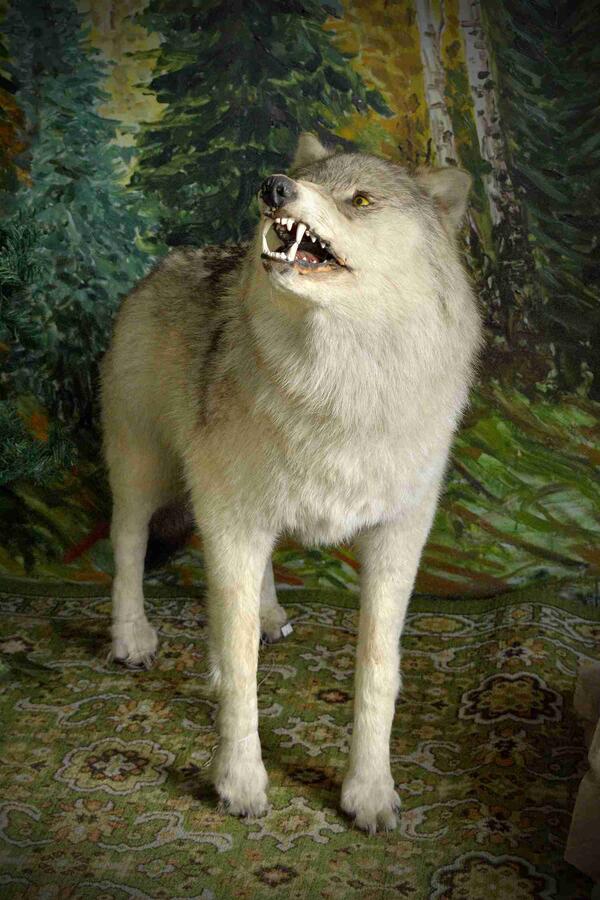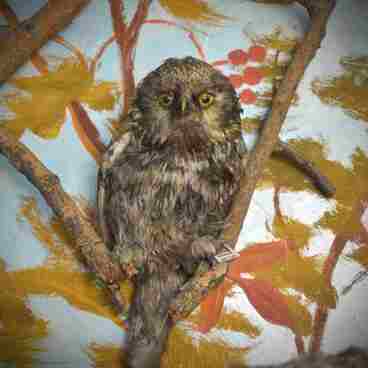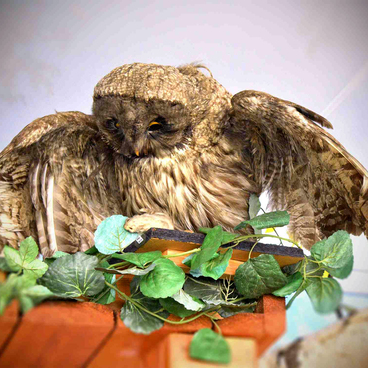As a rule, the she-wolf weighs 5 to 10 kg less than the male. The latter is usually larger than the former and has a bigger head with a protruding forehead. A hierarchical order exists within a wolf pack. The alpha male is its leader and makes all the important decisions. It chooses the place where the pack lives, when they hunt, the status of each member within the hierarchy and makes the necessary arrangements to protect all of them. The leader enjoys absolute power. It takes care of the younger generation and often gives each member its own share of the food in tough times. After all, the alpha male understands that the pups are the pack’s future. Its partner (i.e. the alpha female) is responsible for the behavior of the female members. The amount of freedom the latter enjoy depends on the wishes and character of the female leader. As a rule, it is reluctant to allow other she-wolves to mate with their partners and give birth. However, there are exceptions to the norm. When there is a considerable number of mother-wolves, they have a higher and more privileged status within the pack than male wolves that defend them.
The beta male could be viewed as the substitute of the leader. It organizes hunts and the defense of the pack’s territory, and often behaves aggressively towards the weaker members of the hierarchy thus showing off its status. The beta male is a relative of either the leader or its partner. Quite frequently it is, in fact, their son. In all likelihood, this wolf is destined to lead the pack if the alpha male dies. The role of mother-wolves is to raise pups.
During warmer seasons, several couples, including the alpha male and its partner, leave the pack, mate, find a den and have pups.
On average, a female gives birth to 5 to 6 whelps. These cubs weigh 300 to 500 grams at birth. During the first month of their life, they nurse on their mother’s milk. Three weeks after the pups are born, they can leave their den for the first time. At 1.5 months of age, the youngsters are already capable of escaping from danger. They begin eating solid food 3 to 4 weeks after their birth. During the first four months of their lives, a cub’s weight can increase almost 30-fold. Pups are looked after by mother-wolves, which do not only include females that have given birth that year. The she-wolves tasked with raising the cubs do not hunt or participate in fights with neighboring packs. They are charged with protecting the youngsters and looking after their well-being.
Adult male and female fighter wolves that have not given birth are the foundation of any pack. They are the leader’s fighters responsible for defending the pack’s territory and finding food.
Juvenile wolves are pups from the previous litter. They are taken care of by the pack and supervised by mother-wolves. These adolescents often help raise their younger siblings. Pups are cubs from the last brood. They are looked after and fed, and are even permitted to misbehave.
Wolves also care for their elderly, which also have their own roles. For example, the matriarch, as a rule, is the partner of the previous leader. There is also a male wolf responsible for raising the cubs, and one for warning the pack about impending danger or informing it about a successful hunt.
The beta male could be viewed as the substitute of the leader. It organizes hunts and the defense of the pack’s territory, and often behaves aggressively towards the weaker members of the hierarchy thus showing off its status. The beta male is a relative of either the leader or its partner. Quite frequently it is, in fact, their son. In all likelihood, this wolf is destined to lead the pack if the alpha male dies. The role of mother-wolves is to raise pups.
During warmer seasons, several couples, including the alpha male and its partner, leave the pack, mate, find a den and have pups.
On average, a female gives birth to 5 to 6 whelps. These cubs weigh 300 to 500 grams at birth. During the first month of their life, they nurse on their mother’s milk. Three weeks after the pups are born, they can leave their den for the first time. At 1.5 months of age, the youngsters are already capable of escaping from danger. They begin eating solid food 3 to 4 weeks after their birth. During the first four months of their lives, a cub’s weight can increase almost 30-fold. Pups are looked after by mother-wolves, which do not only include females that have given birth that year. The she-wolves tasked with raising the cubs do not hunt or participate in fights with neighboring packs. They are charged with protecting the youngsters and looking after their well-being.
Adult male and female fighter wolves that have not given birth are the foundation of any pack. They are the leader’s fighters responsible for defending the pack’s territory and finding food.
Juvenile wolves are pups from the previous litter. They are taken care of by the pack and supervised by mother-wolves. These adolescents often help raise their younger siblings. Pups are cubs from the last brood. They are looked after and fed, and are even permitted to misbehave.
Wolves also care for their elderly, which also have their own roles. For example, the matriarch, as a rule, is the partner of the previous leader. There is also a male wolf responsible for raising the cubs, and one for warning the pack about impending danger or informing it about a successful hunt.



